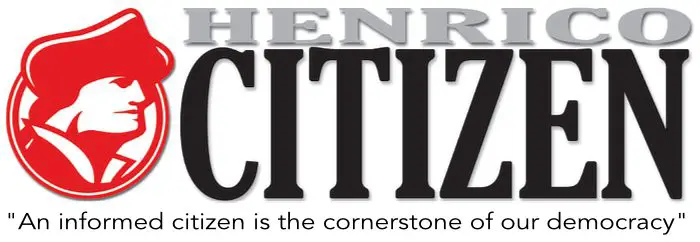
Onboarding isn’t just for new hires — it helps you build relationships in your community, too
Here’s an idea to steal and adapt: To find common ground, create a plan to share your organization’s goals and values.
Consumer revenue can take many forms, including subscriptions, membership and donations. And while these three types of consumer revenue serve unique audience needs and interests, the discipline required to execute each is very similar.

Here’s an idea to steal and adapt: To find common ground, create a plan to share your organization’s goals and values.

When subscribers don’t read content, they’re far more likely to cancel their subscriptions. Hunting “zombies” to reduce churn should be part of any healthy subscription revenue strategy.

In the grand scheme of consumer revenue, it’s tempting to think of membership and subscription as interchangeable models. This detailed report from The Membership Puzzle Project outlines the ways membership is “fundamentally different” from subscription with a wide range of case studies. Any news organization considering membership should understand these basics.

When, and how, should members be consulted about decisions, and how does that fit with membership as a revenue strategy? The balance of expectations, transparency, communication, and shared ownership can be a delicate one that requires careful tending. Emily Goligoski of The Membership Puzzle Project rounds up advice about building and reinforcing member relationships from an international complement of news organizations who are building the membership playbook.

This multi-section report unpacks reader motivations to subscribe.

This report from API examines what news organizations can learn from a deeper knowledge of the emotional and behavioral factors that affect people’s subscription decisions.

A collection of best practices for talking to readers with practical, downloadable examples.

Native advertising can be a tremendously effective revenue driver and service to audiences. If executed poorly, however, it can quickly erode reader trust.

Here are 5 ideas to steal and adapt: From collaborating with creators to revenue experiments you can adapt in your organization, these articles and case studies are the most-viewed in 2025 on BetterNews.org.

Here are 10 ideas to steal and adapt to help boost revenue through products, advertising, fundraising and more.

Here are eight ideas to steal and adapt to help you diversify your revenue streams.

Here’s an idea to steal and adapt: Sales teams can plan content and pitches along a “communication strategy curve” to help the audience understand your work’s value.

Here’s an idea to steal and adapt: Build a reader rewards incentive to engage subscribers.

Proven strategies for local media, as tested by news organizations in the Table Stakes Local News Transformation Program

Here are 10 ideas to steal and adapt: From planning live events to tackling the audience funnel, these articles and case studies are the most-viewed in 2024 on BetterNews.org.

Here’s an idea to steal and adapt: Leverage high-traffic stories to learn more about your local audiences and what they’re willing to pay for.

Here’s an idea to steal and adapt: Gulf Coast Media and The Sumter Item revamped their Athlete of the Week contests to attract corporate sponsors and reader engagement.

Here’s an idea to steal and adapt: The BDN Store complements the Bangor Daily News’ journalism service: fundraising, helping readers show their connection, and promoting shopping sustainably and locally.

Disengagement isn’t easy to recover from, but carefully reconsidering content for target audiences might help.

Here’s an idea to steal and adapt: The Henrico (Va.) Citizen added 9,000+ email subscribers and generated $34,000 in reader revenue in one year.

Here are 10 ideas to steal and adapt: From developing audience personas to building trust, these original case studies are the most-viewed in 2023 on BetterNews.org.

Here’s an idea to steal and adapt: You have a large list of engaged subscribers for your flagship newsletter. Reader revenue is the next challenge. Here’s an example of how a focused, personalized case for support can drive results.

Here are 10 ideas to steal and adapt: From audience-focused initiatives to changing internal systems, these original case studies are the most-viewed in 2022 on BetterNews.org.

Here’s an idea to steal and adapt: Consider reaching a national audience that cares about a topic your newsroom covers well. The national audience may not subscribe because the rest of your reporting isn’t as relevant to them. How could you get them to read, interact with, and most importantly, financially support your coverage?

Here’s an idea to steal and adapt: Use your newsroom talent and expertise to put on live events that show off your depth as an organization and offer new ways for audiences to engage with your work.

Here’s an idea to steal and adapt: Reduce your subscriber churn by focusing on three key areas: grace period, credit card management and targeted customer communication.

Santa Cruz Local CEO Kara Meyberg Guzman united her team behind the practice of community engagement by building a business and editorial case for listening, patient relationship building, and a membership model. Their listening has already paid off in membership gains, audience loyalty, and editorial victories.

When a 100-year-old paper in North Carolina dug into their audience data, they learned about segmentation that helped them boost digital subscriptions.

In 2020, sometimes it feels like we’re all throwing things against the wall. Seven mini-cases from LION publishers offer tactics and full-scale strategies they’ve used to diversify and grow their revenue. Together, the ideas are a good starting point for those regrouping on revenue.

This one-stop guide to membership offers on ramps for organizations beginning to develop these modes of relating with audiences while digging deep into the strategies and tactics that organizations need to cultivate vibrant membership and keep members for the long haul. Staffing, product thinking, trust, revenue, it’s all in here.

News organizations are finding ways to pivot their consumer revenue strategies in response to COVID-19, from taking events online to making timely appeals and building connections among audiences and experts. These adaptations of audience engagement and memberful modes of working are ready for application to our new normal.

Here’s an idea to steal and adapt: Ask the journalists in your newsroom to tell readers about the value of their work and be ambassadors for digital subscriptions on social media.

Subscriber retention efforts can start as soon as a subscription begins, as outlined in this guide to onboarding tactics from API’s Reader Revenue Toolkit. Examples from a range of news organizations are ready for testing and adaptation, from video to thank you notes and email newsletters.

Newsrooms need relevant metrics that connect their work with the business’s bottom line, which often requires pulling data from various nooks and crannies in the organization. Sharing data regularly, with routines to guide that sharing, makes it clear how editorial decisions can contribute to the financial performance of the overall team. This primer on what to measure and how to socialize those metrics with the newsroom demonstrates tactics for bridging functional roles within a news organization.

Here’s an idea to steal and adapt: The News Reporter of Columbus County, N.C., built a digital-first workflow, established a metered paywall and consolidated its subscription plans. The result was an increase in its circulation and subscription revenue.

This research from the Lenfest Institute and The Shorenstein Center illustrates best practices in digital subscription, focusing on the finer points of applying funnel discipline and implementing tools like paywalls and pay meters. The result is a playbook full of tactics to adapt, regardless of a news organization’s size or familiarity with reader revenue.

With the revenue strategies of news organizations evolving, so are the structures and demands on the people creating new ways of sustaining news. This report from The American Journalism Project in partnership with Impact Architects and The News Revenue Hub details how a handful are accomplishing their revenue work and rounds up resources for operations and hiring.

Here’s an idea to steal and adapt: Engaging with and fundraising to a digital-first audience doesn’t mean you have to reinvent the wheel or put your content behind a paywall. But you may need to get input from people across different departments and create small cross-departmental teams with different expertise to complete effective fundraising campaigns.

Updates from the News Revenue Hub show that member and donor-driven news organizations are missing money when they set low fundraising goals or restrict their communication with audiences about the necessity and purposes of their fundraising.

Here’s an idea to steal and adapt: The Miami Herald in August 2018 created Sports Pass, a sports-only digital subscription plan, allowing sports diehards both in and out of market to subscribe at a lower rate than a full digital subscription.

Here’s an idea to steal and adapt: The Sacramento Bee used a SMART-goal setting process to find audiences willing to pay for its work.

Retaining subscribers and members after they join is a complex business. This list of tactics is a quick and concise primer on where to start keeping people on your books, regardless of the sophistication of your marketing operation or engagement technology stack.

Calculating lifetime value of a subscriber is complex, though this spreadsheet makes it significantly simpler to perform that tricky math.

Here’s an idea to steal and adapt: The Post and Courier in Charleston, S.C., created cross-disciplinary teams across the company — spanning the newsroom and the sales/marketing side — to launch new products in specific content areas like food, politics and real estate. The initiative resulted in nearly $900,000 in new product revenue and, in the past two years, an increase in digital subscriptions by 250 percent.

Gwen Vargo from API rounds up examples of well-converting offer pages to demonstrate how their design influences trust and encourages conversion. Design choices at this important stage in the funnel can make or break subscription rates.

This study by the Medill Center at Northwestern University re-centers the importance of local content in encouraging daily news consumption, which the massive data project shows is the most likely predictor of subscription and retention. As simple as it seems, this change represents a dramatic reorientation of the KPI’s for news organizations pivoting from ad-based to reader-supported models.

Based on his work transforming news organizations, Tim Griggs distills the essential elements of successful membership-driven news organizations. He adds a simple outline for the all-important gaps-assessment meeting for those just getting started. This outline is a good starting point for understanding the table stakes for membership-driven news organizations.

Examples from major news orgs and regional outlets fill this primer on the different dimensions on designing user flows that convert, gather reader data, and generate revenue.

No single approach, even email marketing, can be the sole source of subscriber growth and consumer revenue. News organizations should connect with prospective subscribers, both on and offline with a diversified strategy. Gwen Vargo unpacks a portfolio of techniques through mini-case studies.

Peter Gray, The Wall Street Journal’s VP of Optimization, reminds publishers and mini-publishers about the simplest things that boost reader revenue. This quick read includes an outline of the WSJ’s iterative, testing process.

Here’s an idea to steal and adapt: The Dallas Morning News, which has eight major college football programs in its coverage area and just two full-time writers dedicated to them, concentrated on its smallest but most local school and turned it into a digital subscription success story.

Think through whether membership is right for your enterprise with four clear questions.

A fascinating example of a site that operates essentially like a creative agency — and drives the majority of its revenue through paid content.

Lessons in membership programs, including the difference between “thick” and “thin” approaches.

The Guardian has transformed from teetering on financial oblivion to generating more revenue from readers than advertising.

A slew of tips on retention, including customer service specialization, value-added products, and re-engagement marketing.